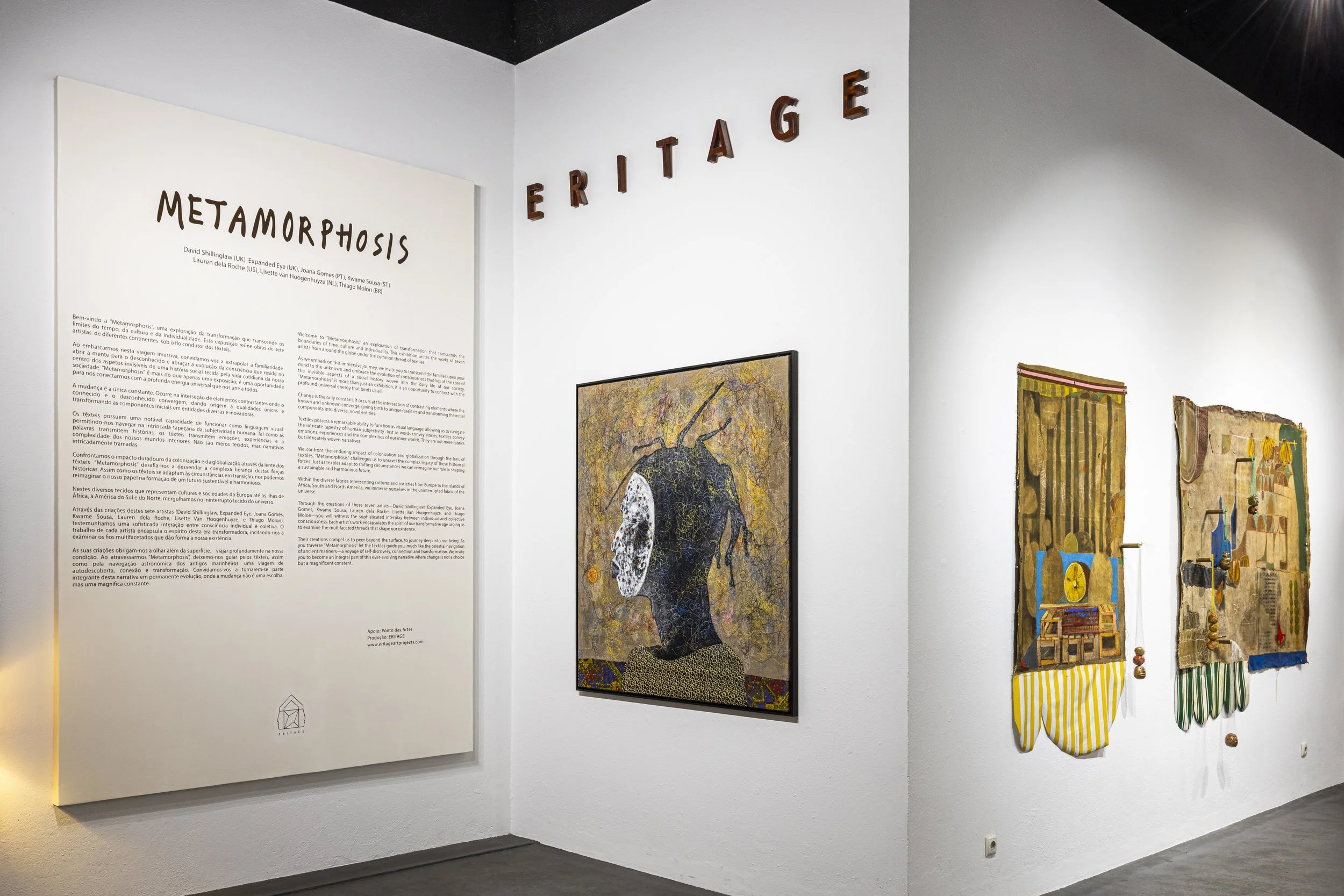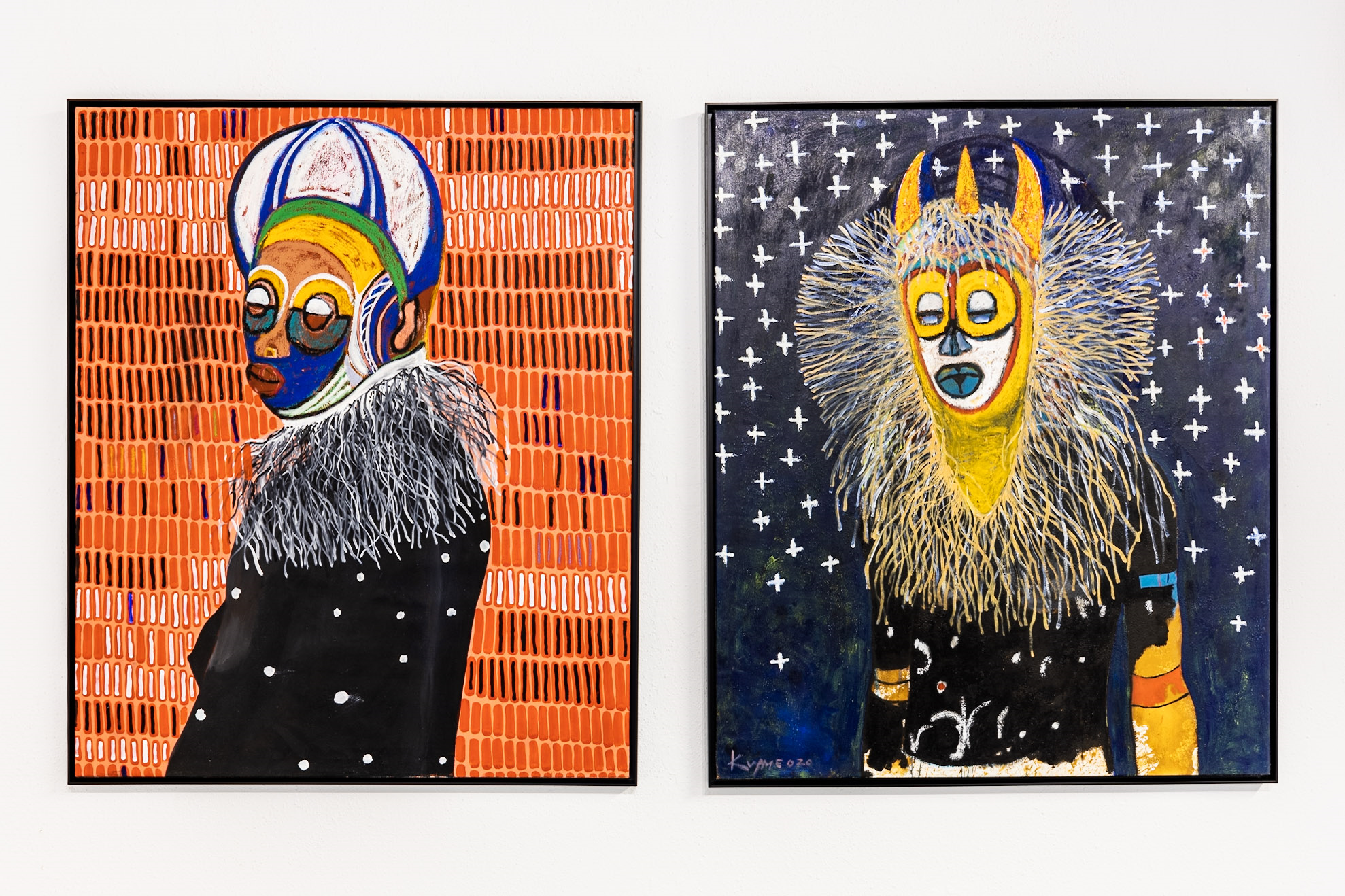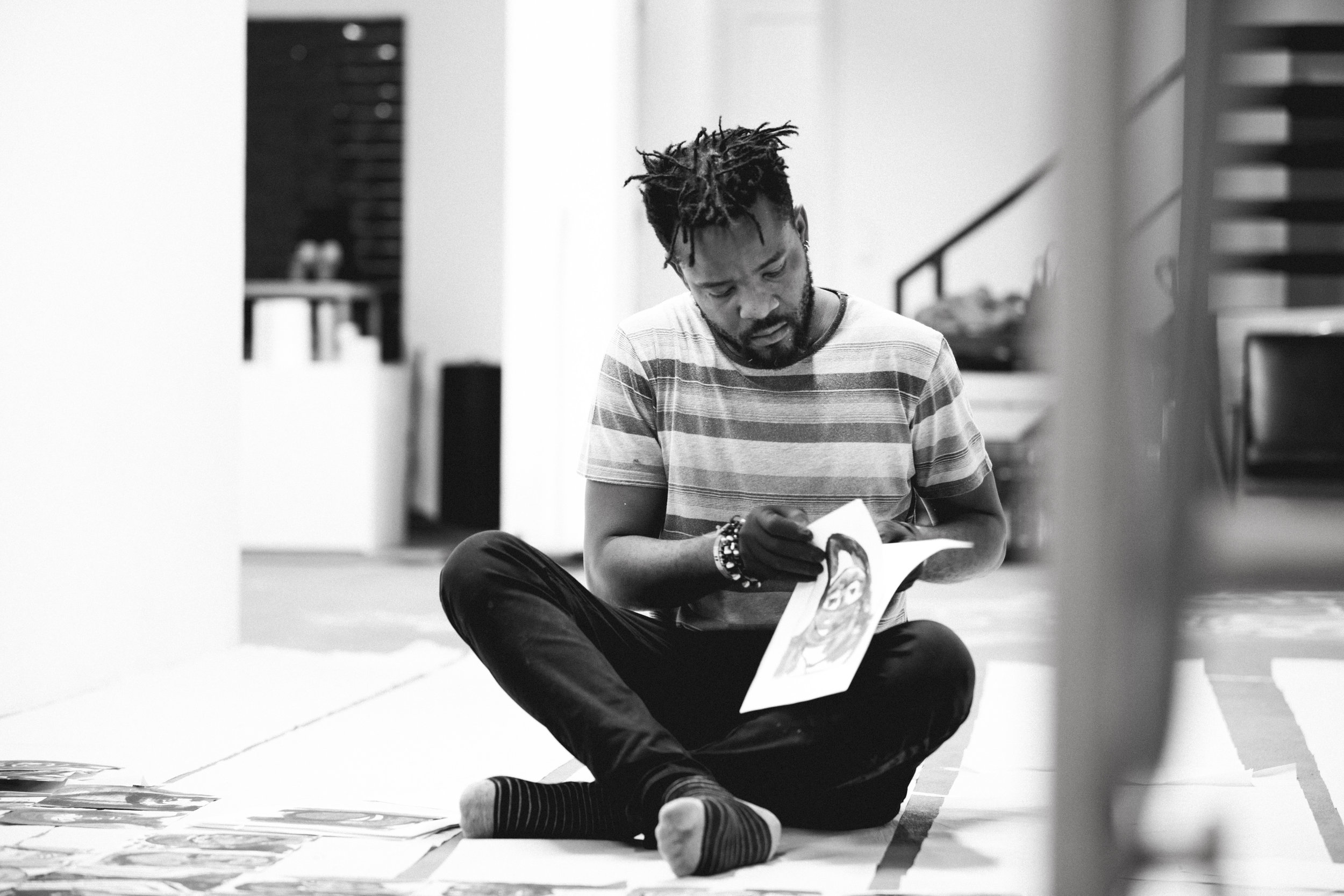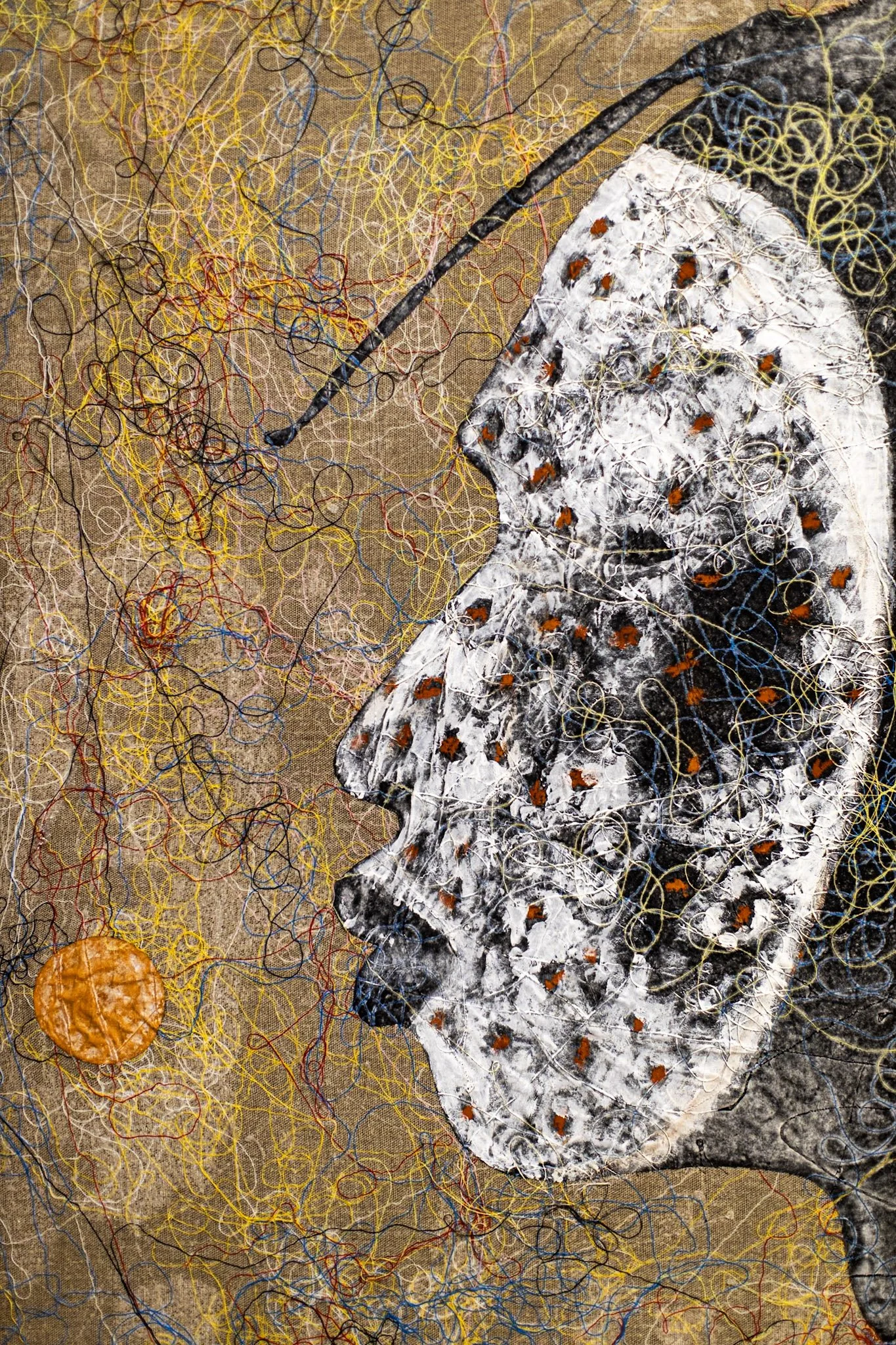Kwame Sousa was part of two collective exhibitions at ERITAGE.
Exhibition | Reino Angolar: Utopias e Territórios
Kwame Sousa
The scale of time dissolves in the paintings of Kwame Sousa. Between past and present, the line is suspended—frozen in a moment where silence and pause are fully inhabited by his protagonists. The artist works in layers:
“I work on several pieces and ideas simultaneously; they are complementary. I don’t aim to synthesize my entire research into a single work. It is a continuous process.”
Often paired or grouped, frontal or in profile, these bodies challenge our gaze—questioning not only what we look at, but how we look. Their feet do not rest on the ground; they seem to hover, suspended between worlds, as if they belong nowhere and everywhere at once. Yet they unmistakably embody the Black body—its history, its resilience—from the epic of enslavement to the era of unrestrained capitalism. His works embrace both the pain and the pride imprinted on every cell of these painted, motionless figures.
Sousa combines text and image to reinforce empowerment through a discursive practice that transfers power to others. He portrays the protagonists of liberation and emancipation movements in full expression of their fight for racial equality, as echoed in the words inscribed upon his canvases. He paints symbols that resist submission and confront the structures of white and capitalist supremacy—concepts so sharply defined by thinkers such as bell hooks.
As the artist himself reflects:
“The utopia of my homeland inspires me to work with and about it. It’s fascinating how the different histories tied to my people have shaped my journey and my work, unfolding across painting, photography, and installation. The timeless narrative that art allows makes this context ever-present. By carrying memories of moments, my work renders that utopian thought tangible—transforming it into a living reflection of identity, and the fortification of ethnic and cultural concepts, of the tangible and intangible heritage many would rather see disappear. My works are not merely born from imagination—they are palpable objects born from the history of my people.”
Sousa’s art invites us to travel through memory and resistance, through presence and transcendence. His language—at once visual and political—reclaims narratives, transforming them into acts of affirmation, beauty, and power.
Biography
Kwame Sousa (b. 1980, São Tomé and Príncipe) is a multidisciplinary artist whose work investigates the history and identity of São Tomé and Príncipe through painting, photography, and installation. A self-taught artist from an early age, he joined the collective Teia de Arte in 2001, where, under the guidance of João Carlos Silva, he exchanged artistic languages with creators from around the world and participated in the 2nd Biennial of Arts of São Tomé and Príncipe (2002).
In 2004, he continued his studies in Portugal, attending the School of Arts and Crafts for the Performing Arts and later studying Painting and Drawing at Ar.Co – Independent Art School, supported by a scholarship from the Portuguese Cooperation.
Over the years, his works have been shown internationally, in venues such as the Luanda Triennale, Bamako Cinema and Arts Festival, the Venice Architecture Biennale, Droog Gallery (Amsterdam), ARCO (Lisbon, Madrid, Paris), and Art in a Box (New York and Washington).
Recognized as part of the third generation of São Toméan visual artists, Kwame Sousa is today considered one of the most influential contemporary artists from his country.
In 2017, after years of building his career abroad, Sousa returned home and founded Ateliê M—the first and only Visual Arts School currently operating in São Tomé and Príncipe. Built on land beside his father’s house, the school has become a vital space for cultural and artistic renewal, nurturing a new generation of conscious artists who remain rooted in their origins while open to the world.
At the heart of his personal artistic journey lies an ongoing investigation into the processes of colonial independence and the construction of African identity—a narrative of memory, empowerment, and transformation that continues to expand through his work.




















